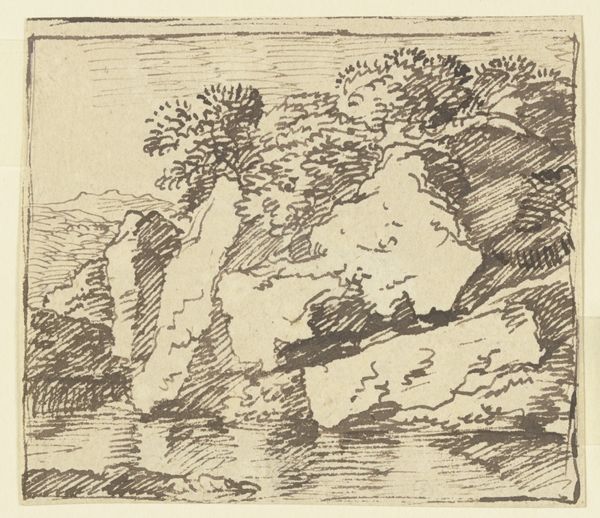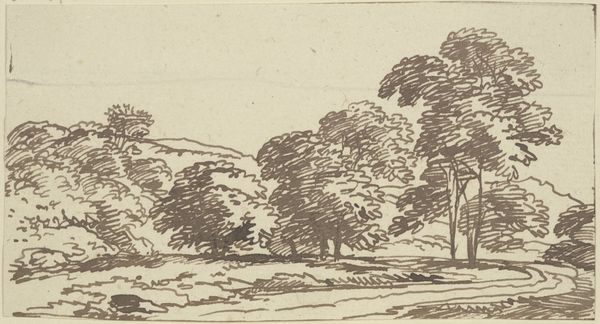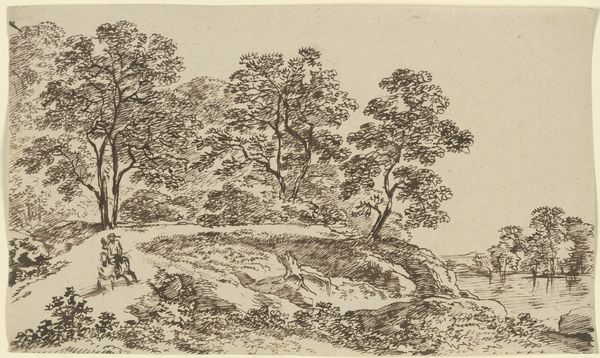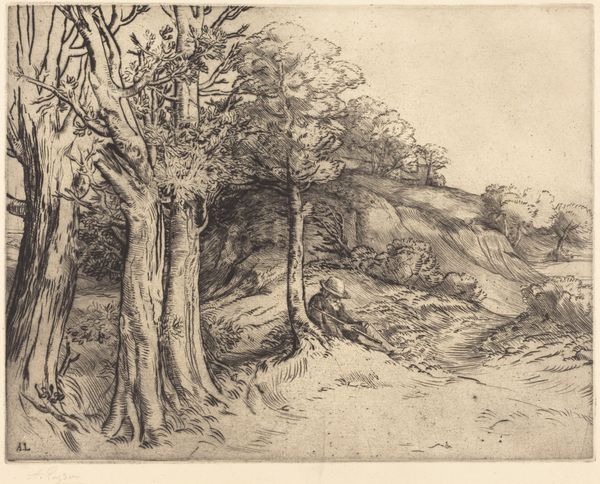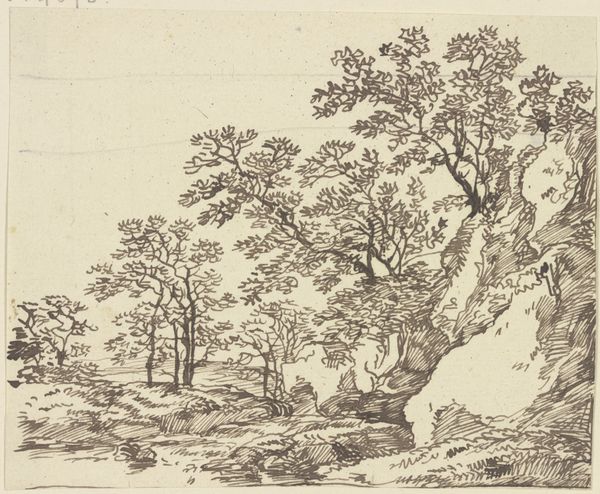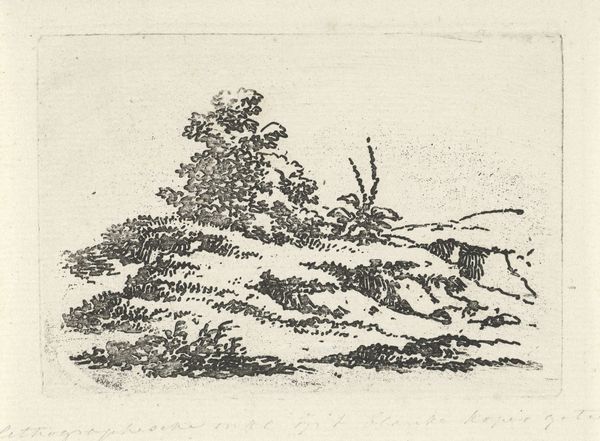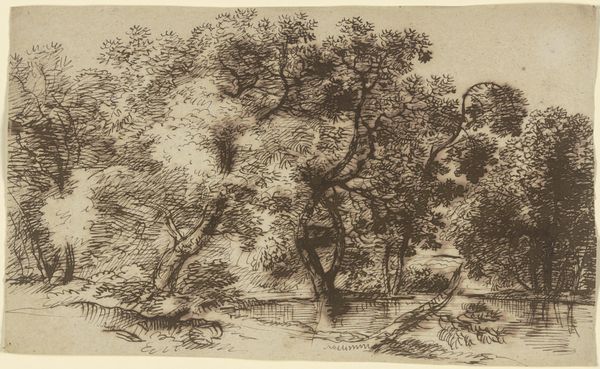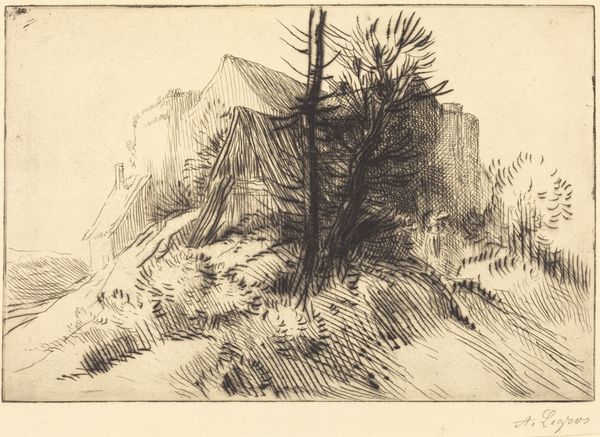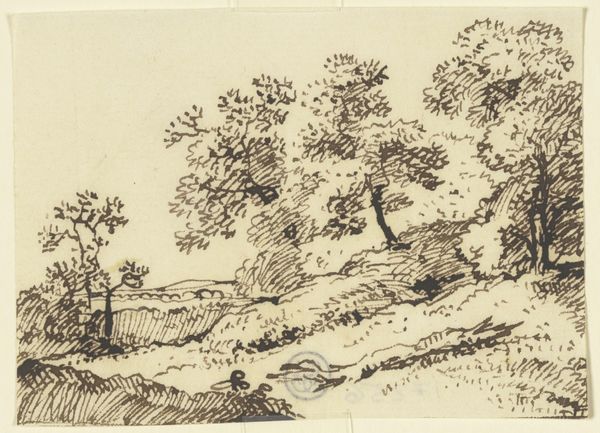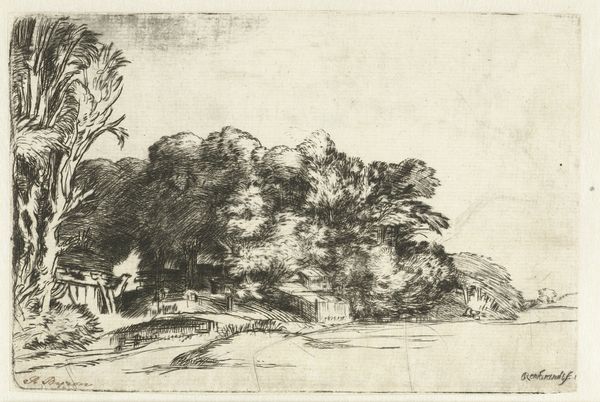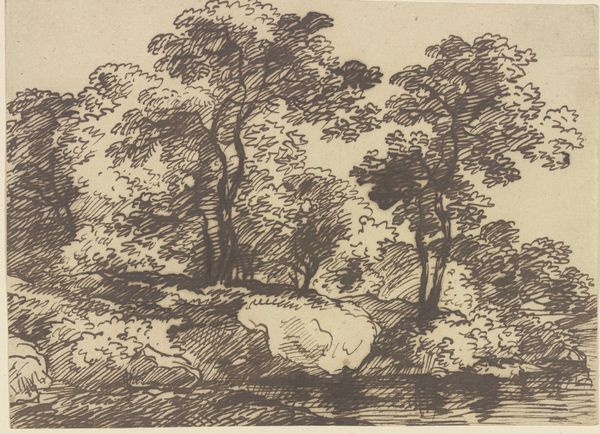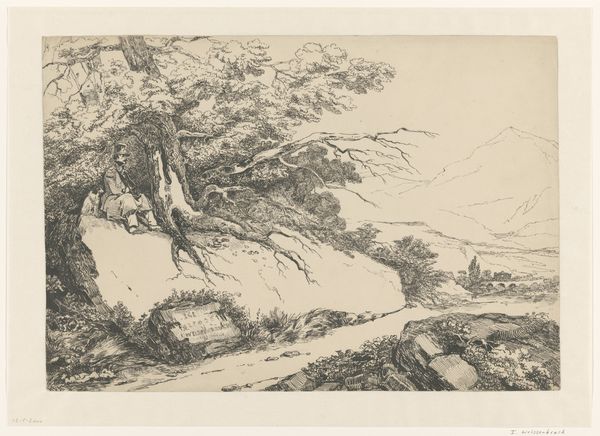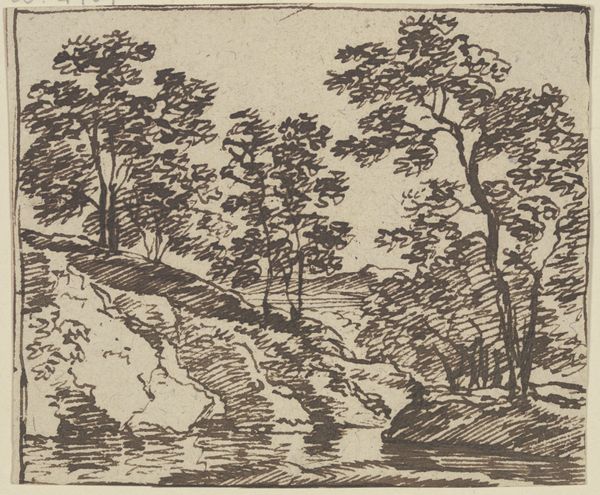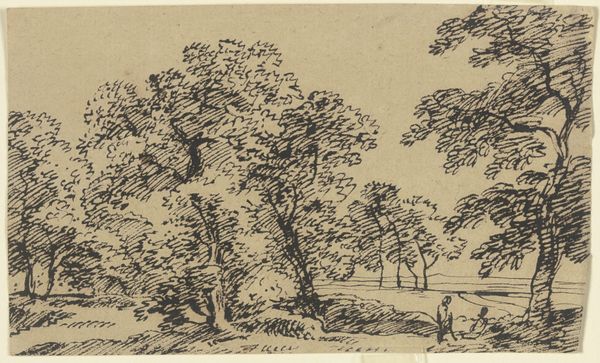
Dimensions: 171 × 238 mm (image); 177 × 249 mm (plate); 316 × 450 mm (sheet)
Copyright: Public Domain
Curator: Edvard Munch's "Evening in the Park," created in 1903, is an etching on paper, currently held at The Art Institute of Chicago. Editor: It’s strikingly stark. The contrasts between the white of the paper and the dark, almost aggressive, lines create an intense atmosphere. It's definitely more disquieting than calming. Curator: Munch's printmaking, particularly his etchings, often involved experimenting with line and texture. Here, look at how he uses densely packed lines to define form. It's not just about representation, but about creating a mood through the very process of mark-making. How the metal plate is etched and then printed affects the end result enormously. Editor: Agreed. And the composition itself reinforces this. The way the massive, almost impenetrable bush dominates the right side, juxtaposed with the more open, yet agitated, tree on the left—there’s an imbalance, a tension. What were his processes when he came to make prints of landscapes, and how did these artistic practices play into the general market of selling Munch's prints? Curator: Printmaking offered Munch a way to disseminate his art to a wider audience, providing some financial independence and increasing his exposure. Think about it in terms of accessibility. But let’s not overlook the emotional dimension here. Landscapes were a way to convey powerful, complex feelings that often are lost to modern art due to commercial pressure, so one way the landscape in Evening in the Park takes hold of those traditional practices and presents new sentiments. Editor: It’s a somber take on Impressionism for sure. Rather than the fleeting light and cheerful atmosphere of, say, Monet, we have something much darker and more psychologically charged. Curator: Precisely. And to conclude: the etching process is intrinsically connected with the context of production, impacting on the final meaning of the print and the labour. Editor: I agree, and I appreciate how this analysis makes me think deeper about landscape print.
Comments
No comments
Be the first to comment and join the conversation on the ultimate creative platform.
